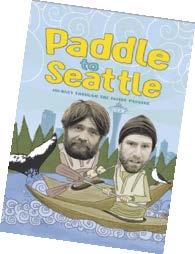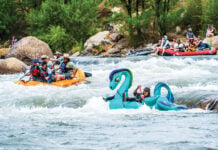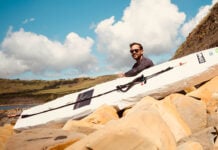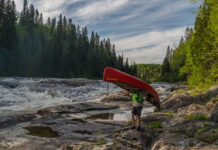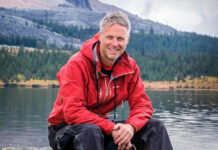In 2015, we celebrated the 10th anniversary of the Paddling Film Festival by checking back with a few filmmakers whose films we featured over the previous 10 years. This article was part of a series catching up with filmmakers and finding out what they’d been up to since their films embarked on our annual world tour.
 About Paddle to Seattle
About Paddle to Seattle
A charming story of friendship, discovery and humor in the face of adversity, Paddle to Seattle claimed Best Sea Kayaking Film at the Paddling Film Festival in 2010. Aided by diverse scenery and fearlessness of the effect of foul weather on fragile electronics, J.J. Kelley and Josh Thomas are natural storytellers.
There are none of the post-trip voiceovers so common to this genre—you feel like you are truly along for the ride: cold neck rain, musky whale breath, close calls with bull kelp lassoes, and everything else the fellas run into. Their wit is in the same dry, deadpan vein as Bill Murray and Dan Aykroyd in Ghostbusters; a wonderful on-screen rapport that makes Paddle unlike any other sea kayaking film then or since.
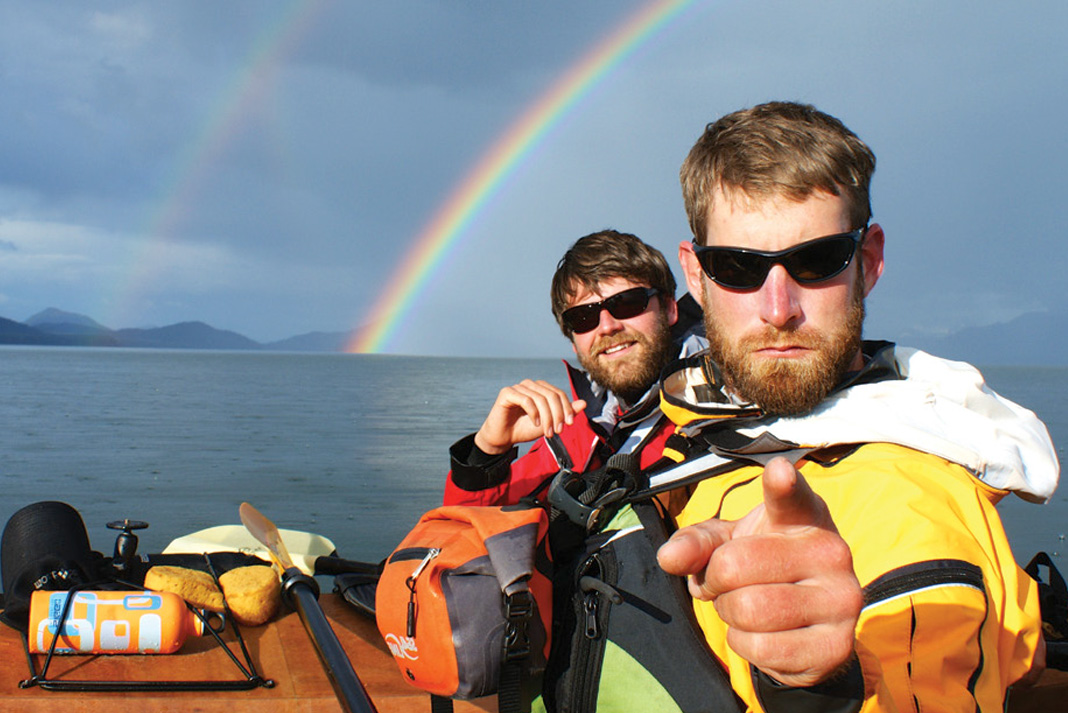
The filmmakers: J.J. Kelley and Josh Thomas
“It’s one thing to come up with the idea for a film—the idea of going on an amazing adventure—but if you’re going to make a movie about it, you’ve got to have a name that grabs people and brings them into the story,” Josh Thomas tells the camera from inside his tent in the opening scenes of Paddle to Seattle.
In 2011, the pair set off for India to complete a by-any-means-necessary source-to-sea descent of the country’s holiest—and most polluted—river. The most memorable scene in Go Ganges is Kelley and Thomas rowing on a literal “river of poo” while contemplating the fact that many of the wild places we seek out are becoming ever less wild.
“I had this awesome title in my mind forever; even as a kid I remember thinking, ‘This title can be used somewhere in my life.’” Thomas hasn’t finished speaking and already we’re hooked.
The narration then flips to trip partner J.J. Kelley sheltering in the same soggy tent. “Josh told me, ‘Come with me, I’ve got this special idea for this film we need to make.’” Kelley goes on to describe a clandestine, behind-closed-doors revelation of the title that would take them both to scarcely imagined places.
When Thomas delivers the punch line—“That title was Into the Wild”— the budding filmmakers cement Paddle to Seattle as a funny, endearing and smart buddy flick and one of our all-time favorite paddling films.
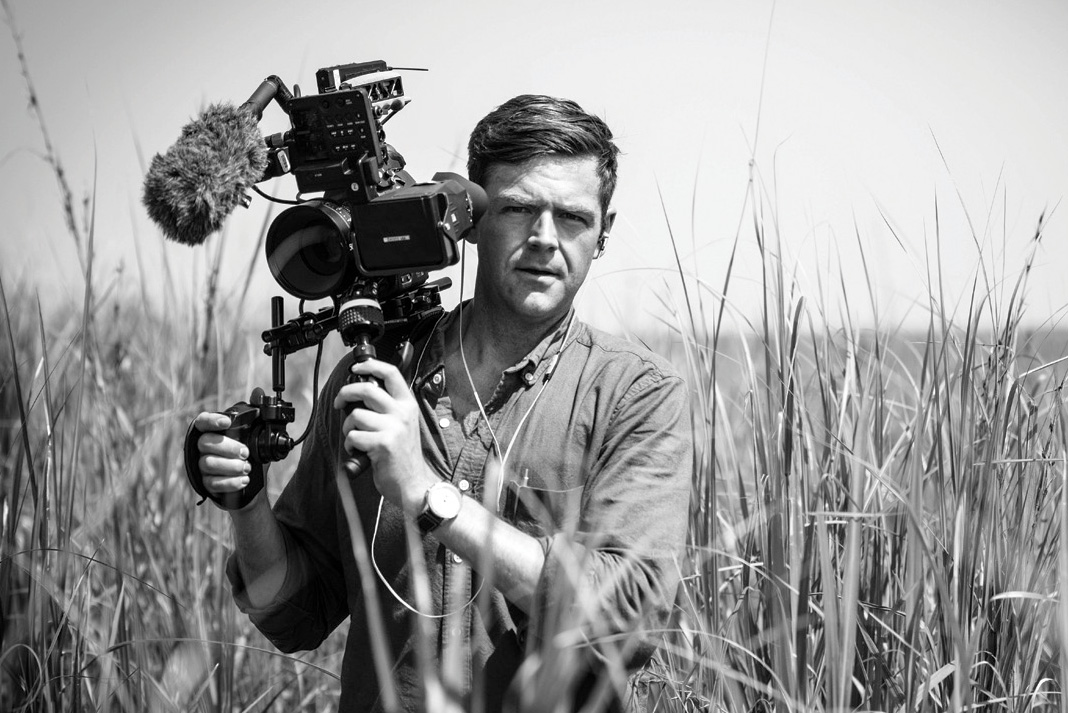
Thomas and Kelley’s unfailing sense of humor, optimism and self-deprecation establish them from the start as loveable underdogs. On day one of the 1,300-mile journey—while pumping several liters out of his leaky front hatch after paddling in 30-knot gusts with four-foot seas—Kelley tells his friend’s camera, “Those were the nastiest conditions I’ve ever sea kayaked in my life”…pump…pump…“I couldn’t have gone much further. Seriously, it was f***ing awful.” But he’s smiling.
In 2003, Kelley and Thomas met 500 miles into respective solo thru-hikes on the Appalachian Trail and ended up walking 2,000 miles together. “We both used humor as a coping mechanism for the suffering that comes along with a long expedition,” recalls Thomas.
The following summers found them working in Alaska together, teaching kayaking, crewing fishing boats and driving tractors, but both dreamt of making a living from adventuring. Enter filmmaking. Paddle to Seattle came on the heels of their freshman film, Pedal to the Midnight Sun, documenting an Alaskan cycling adventure.
“We knew we wanted to get to Seattle,” jokes Kelley when asked about planning for Paddle. “We wanted to keep it extemporaneous and fun. We didn’t want anything canned.” Despite their cheerful enthusiasm, neither imagined the acclaim Paddle would eventually receive, sweeping dozens of awards on the festival tour and garnering an Emmy nomination.
Paddle confirmed Thomas and Kelley as bonafide filmmakers and their adventure features have since grown in step with professional careers in television production.
“We started working more and more as TV cameramen, producers and directors,” says Kelley. “Ultimately, television is paid for by commercial dollars and you have to keep those people happy. Our adventure films are about making us happy.”
Whether pursuing their own interests or producing content for television, “we try to stick with projects that speak to our values of wilderness, wildlife and adventure,” says Thomas.
In 2015, those projects found Kelley and Thomas collaborating on conservation-focused short films for National Geographic, where Kelley works as a producing director. Gyre: Creating Art from a Plastic Ocean (2013) looks at how garbage impacts our planet, while Battle for the Elephants took the pair to the central Congo to document the trade of illegal ivory.
“In the end, you want to inspire people,” says Thomas. “No matter how depressing a story it is—elephants on the brink of extinction, or garbage in the oceans—there’s always an inspirational twist you can add to it. That’s the goal of our films, to give people hope.”

When we caught up with the duo for this story in 2015, Thomas—who works on contract—had just returned from a four-month shoot on a crab-fishing boat in the Bering Sea for the Discovery Channel series, Deadliest Catch, and was heading out to film the release of wood buffalo in Alaska for Nat Geo Wild. Between gigs, he returns to the same beach in Seward, Alaska that he’s lived on for the past decade. Kelley estimates that between them they traveled around the globe perhaps 10 times in 2014/15. Both cite increasingly hectic work schedules as the biggest life change since Paddle.
“It’s such a huge landscape, an enormous distance, at three miles per hour covering 15 miles a day, you have a lot of time to reflect,” muses Thomas at the end of Paddle’s 99-day odyssey. “To think about where you’re going and where you’ve been and what you want your future to look like.”
If the past five years have been a wild ride, the next five promise more of the same. “We’re still goofballs,” observes Kelley, “we’re just a bit more grown up now.”
Restless for adventure, they’re scheming up potential expeditions for 2016. It’ll be something difficult, something outside their comfort zones. “That’s how you learn about yourself,” says Thomas. “Whatever it is, it will be uncomfortable. And we’ll be laughing.”
Since this article was published, Kelley has gone on to host the Travel Channel’s series Lost in the Wild, which investigates some of history’s greatest adventures gone wrong. He is also a producer and correspondent for National Geographic Channel’s flagship documentary series, EXPLORER.
More from this series:
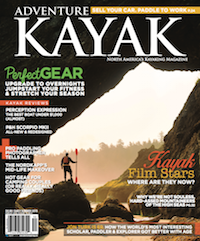
Subscribe to Paddling Magazine and get 25 years of digital magazine archives including our legacy titles: Rapid, Adventure Kayak and Canoeroots.



